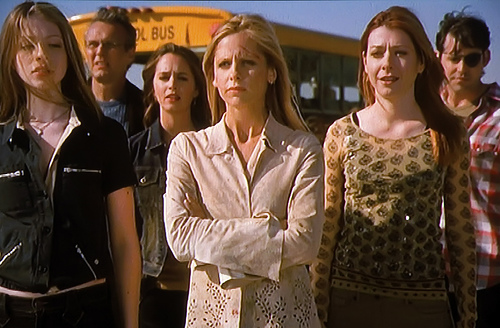By Clair McLafferty

When I have kids, they will not be allowed to watch The X-Files until they have watched the entirety of Joss Whedon’s body of work. They will not watch Star Trek Into Darkness until they have been thoroughly indoctrinated, I mean, introduced to the original series.
Call me what you will, but my children will learn first and foremost to be the heroes of their own stories. In The X-Files and Star Trek Into Darkness, female characters are defined first and foremost by their relationships to the men around them. None of their degrees, experiences or qualifications informs how these characters act.
In The X-Files Dana Scully, a medical doctor turned FBI agent, is specifically written to fill certain roles. She is the science-loving skeptic to Mulder’s beliefs for the first six seasons, then later serves as a champion of the paranormal to counter Agent Doggett’s skepticism. She credits Mulder with inspiring her strength to survive cancer. She is the mother to a super-soldier. She is Mulder’s love interest.
Some might argue that Scully is a strong woman within the societal boundaries of the time. However, Buffy The Vampire Slayer started only four years later, and the female characters are completely dissimilar. Despite Buffy’s powder-puff name, she is defined by her choices and struggles with identity, not by her (really, really) dysfunctional relationships with men.
More troubling is how Hollywood hijacked both J. J. Abrams and the women of Star Trek. As one of the strongest woman characters in television history, Uhura has been reduced to the role of Spock’s girlfriend. Carol Marcus, a PhD in applied physics, appears as Admiral Marcus’s daughter – and for a completely gratuitous underwear shot.
It’s certainly not that J. J. Abrams is unfamiliar with creating strong, independent women. As the creator of Felicity from Felicity and Agent Olivia Dunham from Fringe and the director for Zoe Saldana’s Uhura in Star Trek (2009), he is aware.
The next generation of nerds is at stake here. Frankly, the fact that women are still being portrayed as not quite full characters is ridiculous, but nipping this trend in the bud requires that we recognize this trend and fight back.
As geeky as it sounds, the first step to action is to start the discussion. If you see woman characters created for men, by men, speak up. Introducing this concept to your friends and children helps all of us recognize the problem.
After this point, cast your vote with your remote. Your time and energy are two of your greatest assets, and focusing them away from problematic shows brings down the show’s ratings. If the conversation becomes large enough, the character might be resolved by an early cancellation – or a rewrite.
Our voices are our strongest weapons in determining the aspects of pop culture and fandom that endure. It is only when we use them on a regular basis to express our pleasure or distaste that we can make a true change.
Clair McLafferty is the author of our geek girl culture column Talk Nerdy To Me. When she isn’t writing, Clair can usually be found nerding out on programming, cocktails, physics, comics and movies. Some of these interests spill over into her writing at clairmclafferty.com and on to her Twitter feed @see_clair_write.

113 comments
Deprecated: parse_str(): Passing null to parameter #1 ($string) of type string is deprecated in /home2/seejanew/public_html/wp-content/plugins/jetpack/class.jetpack.php on line 4073